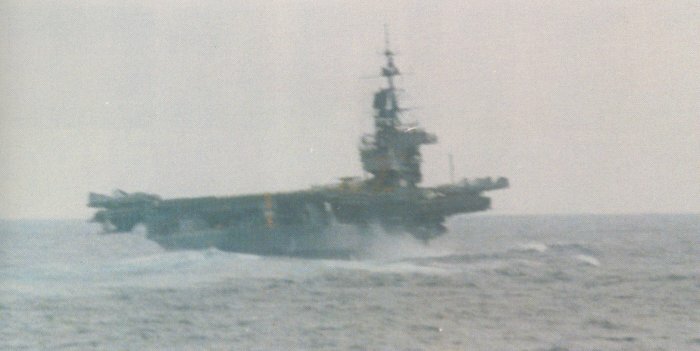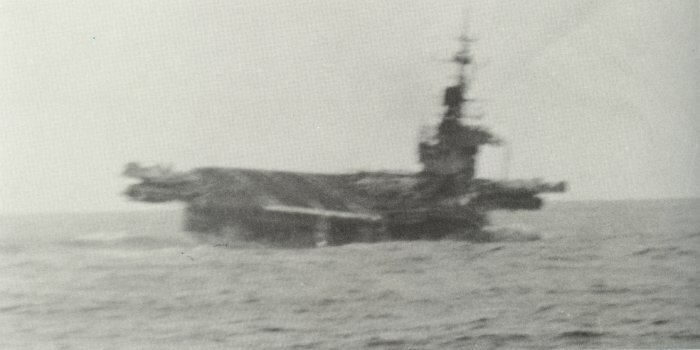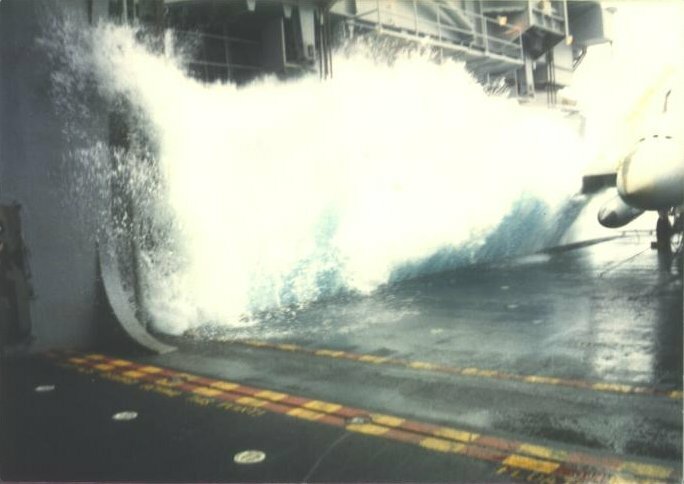Now look at H_K's drawings - note that the same modification to the forward lift is possible for Centaur-class CVLs, allowing a longer and more-powerful port bow catapult to be fitted.
Extending the flight deck edge before and aft the island, and aft on the port side similar to Ark Royal's extension there, would provide mass to counterbalance a wider angled extension of the flight deck.
Not having moved the fore lift to the front of the angle allows a catapult to be installed on the fore half (or 1/3) of the angle, which also allows the starboard bow to be used for aircraft parking.
If the aft lift is moved to the starboard deck-edge during completion in the same manner Hermes' fore lift was moved to port while moving the fore lift 9' to starboard (62' wide hangar, 44' wide lifts), and the deck edges expanded, then a CVL even more-capable than Hermes is created, even without lengthening the ship any.
Note the light gray line of the hangar shape (I left the spaces used for the lift machinery etc to be converted to replace the spaces lost in extending the hangar to the outboard hull side for the deck-edge lift):
View attachment 744487



















